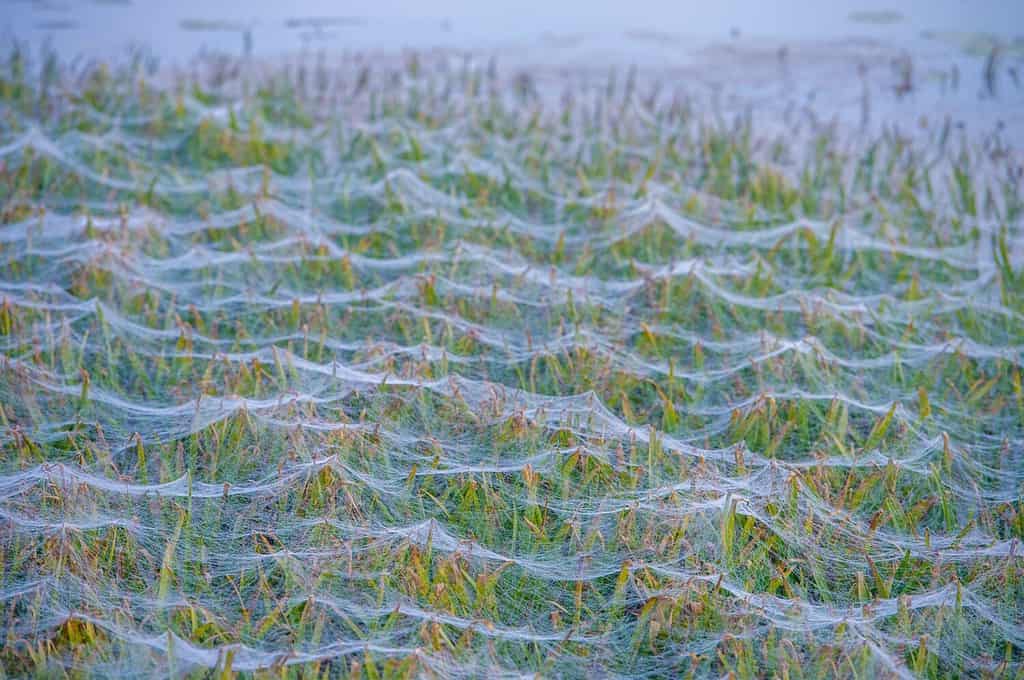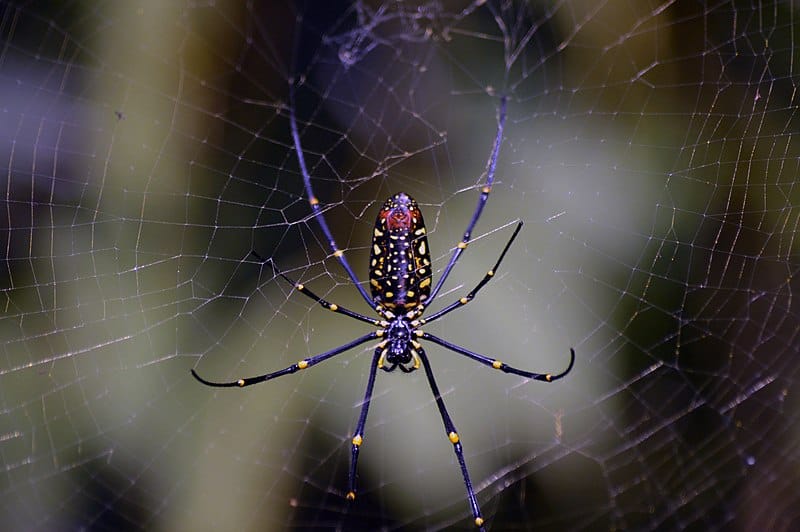Arachnophobia has deep roots in Greek mythology, its terminology inspired by the legend of Arachne. While there are no goddesses like Athena to turn people into spiders today, their existence still strikes fear into the hearts of many. That fear is only amplified when videos like this one, posted by @never_unpacking, show their true nature. This “wall of spiders” is rare, but it’s happened in several countries over the last few years. If the thought of walking into these webs gives you the heebie jeebies, wait until you hear just how many spiders can weave a silk wall like this one.
The Infamous “Wall of Spiders”
The term “wall of spiders” does not refer to a single event, but rather to several similar occurrences in recent years. In 2024, a TikTok user, @graces_adventures, visiting Bali, posted a video of a similar-looking web wall. “If you’ve been looking for a reason not to visit Bali, this is it,” she said in her video. “This is the worst thing I’ve ever seen in my entire life. Not exaggerating.” As the camera panned down the town’s streets, hundreds of spiders hung from massive webs. They covered utility poles, stone walls, and hung between buildings. Some of the spiders were roughly the same size as a human hand, only deepening the fear for arachnophobes.

Spiders weave their webs based on instinct, choosing locations where food is abundant.
©Tatyana Mi/Shutterstock.com
That same year, a man named Paul Welsh posted a similarly disturbing image on Facebook. “View from my window in Bali, Indonesia, a few years back. Some of these spiders were huge, and there were hundreds of them…not for the faint-hearted,” he wrote. The photos depicted the same scene: Massive spiders, seemingly hanging in the same webs they shared with dozens of others. In the pictures, you can see where many of the webs overlapped. Instead of one giant web, there appeared to be many small webs overlapping, as if the spiders had run out of space and started weaving on top of each other. Each time these posts resurface, the question is always the same: What spiders are responsible for this, and why?
An Orb Weaver Spider Party
Several spider species can weave webs more than three feet wide, but only one species is responsible for constructing these large communal webs. The giant orb weaver is found throughout many warm-weather countries, including the Americas. They look intimidating but are non-aggressive and relatively harmless to humans. The large orb weavers seen in photos and videos are typically female and grow significantly larger than males. Female giant orb weavers can have bodies measuring up to two inches, with a leg span of up to five inches. This makes them look like a formidable opponent, but they’re docile in nature and only care about catching bugs.

The giant orb weaver looks dangerous, but it is harmless to humans despite its large size.
As for the “wall of spiders,” this is commonly seen among communal species. Some spiders, such as the giant orb weaver, build communities. When this happens, webs can overlap, creating giant “walls” of silk full of spiders that inhabit them. Another way spiders create large silk structures is through a process called “ballooning,” where they spin silk threads and use the wind to travel to new locations. This usually results in silk covering bushes, trees, and open fields, rather than forming the vertical ‘walls’ seen in Indonesia and Bali. These walls can stretch for hundreds of feet, creating the appearance of a solid wall of spiders.
Why Do Spiders Build Communal Webs?
In 2015, a massive communal spider web in Dallas, Texas, made the news. This web covered an entire tree, making it look as though it was veiled in thin material. That material was the silk of orb weavers, hundreds of which congregated to build a community within the tree’s branches. These spiders build such webs for two main reasons: survival and access to food.

Spider silk is incredibly strong and can often withstand wind, rain, and other harsh elements.
©Leanne Irwin/Shutterstock.com
Spiders are clever arachnids and are very much in sync with their surroundings. This area of Dallas was a promising hunting ground, with plenty of mosquitoes and other flying pests. The local orb weaver population picked up on this and moved in together for the best chances at survival. As more spiders arrived, the web continued to grow, which increased the chances of catching swarms that flew through. In rare cases, working together rather than living a solitary life is more beneficial for an arachnid. This was true in Dallas, as well as in the cases involving giant orb weavers in Bali and Indonesia.
Thank you for reading! Have some feedback for us?
Thank you for your feedback!
We appreciate your help in improving our content.
Our editorial team will review your suggestions and make any necessary updates.
There was an error submitting your feedback. Please try again.







